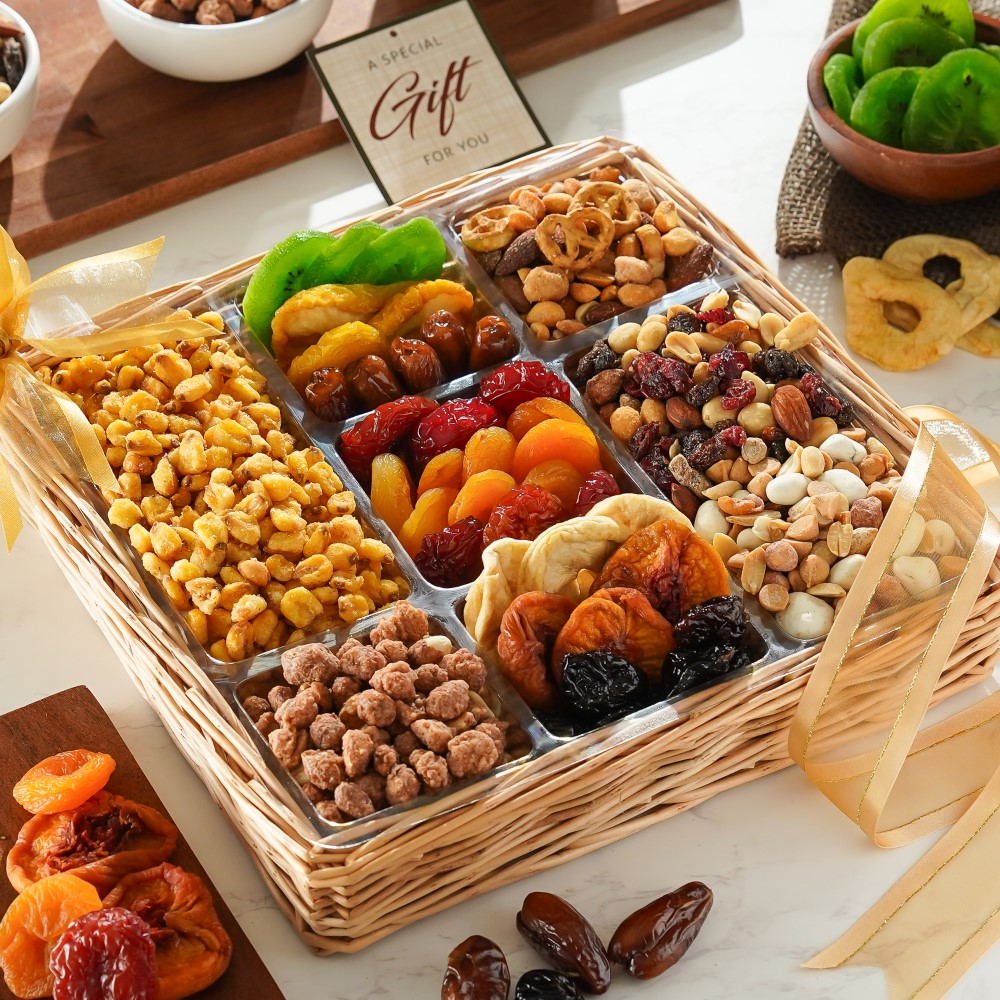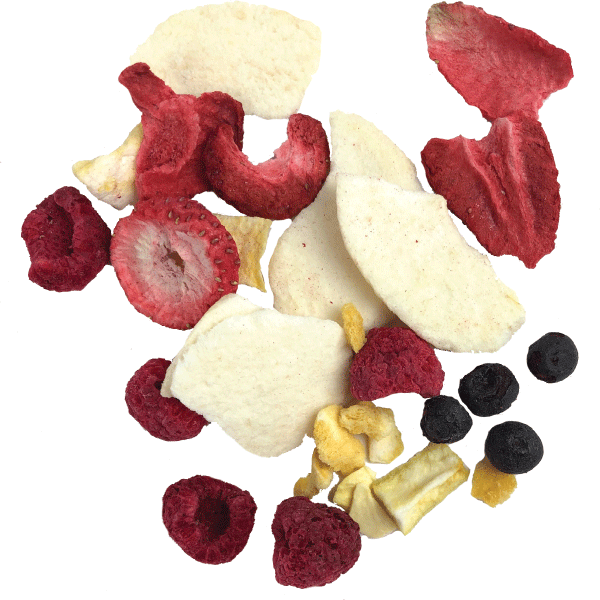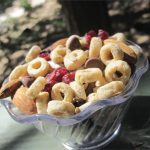The Importance of Fiber in Your Diet
Does dried fruit have fiber? Fiber plays a crucial role in maintaining a healthy diet. It’s a carbohydrate that our bodies don’t digest but instead, it travels through our digestive tract, helping with a range of bodily functions. Including fiber-rich foods in your meals can make a big difference to your health. This nutrient keeps your digestive system in shape, and also offers several other benefits that might surprise you.

How Fiber Benefits Digestive Health and Well-being
Incorporating fiber into your diet can boost your digestive health significantly. Here are the key ways fiber does its good work:
- Keeps Your Bowel Movements Regular: Fiber adds bulk to your stool, making it easier to pass. This can prevent constipation and keep your bowel movements regular.
- Aids Weight Management: High-fiber foods make you feel full, which can stop you from overeating. This is helpful if you’re looking to manage your weight.
- Lowers Cholesterol Levels: Some types of fiber can bind with cholesterol in the digestive system, reducing overall levels.
- Regulates Blood Sugar: Fiber can slow down the absorption of sugar, which helps control blood glucose levels, especially for people with diabetes.
- Supports Overall Health: Regular fiber intake is linked to a reduced risk of developing various chronic diseases, including heart disease, diabetes, and certain types of cancer.
Through these actions, fiber promotes a sense of well-being and improves your overall health. Despite its vital roles, many people don’t consume enough fiber. Adding dried fruit to your diet is one easy way to increase your fiber intake, and it comes with the bonus of added vitamins and minerals.
The Nutritional Profile of Dried Fruits
Dried fruits are not just tasty; they’re nutritional powerhouses. When you’re looking at snack options, dried fruits are a smart choice due to their fiber content and rich nutrient profile. They offer an array of vitamins, minerals, and antioxidants on top of being convenient, portable, and having a long shelf life.
Understanding the Fiber Content in Common Dried Fruits
Knowing which dried fruits have the most fiber can help you make better dietary choices. Let’s look at some popular dried fruits:
- Raisins: A sweet addition to many dishes, raisins provide 2.7 grams of fiber per 100 grams.
- Apricots: These tangy treats pack 8.1 grams of fiber per 100 grams, a substantial amount.
- Dates: Often used as natural sweeteners, dates offer 4 grams of fiber and numerous essential nutrients per 100 grams.
- Prunes: Noted for aiding digestion, prunes have an impressive 5.2 grams of fiber per 100 grams.
- Figs: Figs are fiber powerhouses with 10 grams of fiber per 100 grams, making them one of the top choices.
These fiber amounts are indicators of how dried fruits can be integrated into your diet to help you reach the recommended daily intake of fiber. However, it’s essential to balance the consumption of dried fruits with their calorie content to maintain a healthy diet. Keep in mind the various health benefits they offer while also enjoying their delicious taste.
Comparing Fiber in Nuts and Dried Fruits
When you’re choosing healthy snacks, both nuts and dried fruits are valuable options. They each offer different amounts and types of fiber, alongside other nutrients. Let’s dive into how their fiber contents stack up against each other.

Evaluating the Benefits of Fiber-Rich Snacks
Snacking on fiber-rich foods like nuts and dried fruits can have great benefits for you. These include:
- Extended Fullness: Foods high in fiber, such as nuts and dried fruits, can help you feel full longer.
- Steady Energy: They provide a slow release of energy, which is great for sustained nourishment.
- Heart Health: Many fiber-rich snacks contain nutrients that support heart health.
- Digestive Wellness: They can promote regularity and a healthy digestive system.
Remember, while nuts typically have higher protein and healthy fats, dried fruits usually offer more vitamins and minerals. Your choice can depend on your specific nutritional goals. However, incorporating a mix of both can give you the best health boost.
Which Dried Fruits Offer the Most Fiber?
In the quest for fiber-rich foods, dried fruits stand out as a delightful source. They’re packed with dietary fiber, essential for a healthy diet. But not all dried fruits are created equal when it comes to their fiber content. By choosing the right ones, you can easily amplify your daily fiber intake.
Spotlight on Fiber-Rich Dried Fruit Options
When it comes to fiber, some dried fruits are true champions. Here are a few top picks:
- Figs: Bursting with fiber, figs offer about 10 grams per 100 grams. They’re a powerhouse in your fiber diet.
- Apricots: With 8.1 grams of fiber per 100 grams, apricots are not only tangy but also incredibly fibrous.
- Goji Berries: Known for their health benefits, goji berries contain about 8.8 grams of fiber per 100 grams.
- Prunes: Apart from aiding digestion, prunes provide an impressive 5.2 grams of fiber per 100 grams.
- Dates: Dates pack 4 grams of fiber per 100 grams, along with a host of nutrients.
- Raisins: A staple in many pantries, raisins contain 2.7 grams of fiber per 100 grams.
These dried fruits are not just filling; they also add a sweet burst of flavor to any dish. They make for an easy snack or can be a delicious part of meals. When you’re looking to boost fiber intake, focusing on these options can be a smart choice. Remember to enjoy them in moderation, as they can be higher in calories due to their condensed sugar content.

Incorporating Dried Fruits into Your Diet
Adding dried fruits to your meals can boost your fiber intake. They also bring a natural sweetness that can enhance various recipes. Whether you have them as a snack or include them in dishes, there are multiple ways to enjoy these fibrous treats daily.
Creative Ways to Enjoy Dried Fruits Daily
To weave more dried fruits into your diet, consider these ideas:
- Mix into Breakfast Cereals: Top your morning bowl with chopped dates or figs for extra fiber.
- Blend in Smoothies: Add apricots or raisins to your smoothie blend for a sweet, fibrous kick.
- Bake into Goods: Fold prunes or dried berries into muffins or bread for a tasty, fiber-rich treat.
- Stir into Salads: Enhance your salads with a sprinkle of goji berries or dried apricots for a tangy crunch.
- Pair with Nuts: Combine your favorite dried fruits with nuts for a balanced, nutritious snack.
These simple methods bring the benefits of dried fruits to your table every day. Remember to control portions to balance the fiber benefits with the calorie count. Enjoy the variety and boost your fiber intake with these delicious, healthy additions.
Balancing Calories and Fiber in Dried Fruits
When aiming to boost fiber in our diets, it’s important to balance the additional fiber with overall calorie intake. Dried fruits are a fantastic source of fiber, but because they are dehydrated, their sugars are more concentrated, which means they’re higher in calories per serving than their fresh counterparts.
To manage your calorie intake while adding more fiber to your diet, consider the following tips:
- Choose Wisely: Stick to dried fruits high in fiber but lower in calories, like apricots and prunes.
- Portion Control: Eat small amounts. A handful can provide a beneficial amount of fiber without too many calories.
- Mix and Match: Combine dried fruits with other high-fiber, lower-calorie foods like popcorn or whole grain cereals.
- Read Labels: Always check nutrition facts to stay aware of calorie and fiber content.
- Snack Smart: Use dried fruits as part of a balanced snack with proteins and healthy fats.
By paying attention to these details, you can enjoy the benefits of fiber in dried fruits while keeping calorie consumption in check.
Myth-Busting Misconceptions About Dried Fruits
Dried fruits are often misunderstood. Let’s clear up some common myths:
- Myth: Dried fruits are just empty calories.
- Truth: They’re packed with fiber and essential nutrients.
- Myth: They’re too sugary to be healthy.
- Truth: Natural sugars are bundled with fiber, slowing digestion.
- Myth: Fresh fruits are always better.
- Truth: Dried fruits offer similar benefits with convenience.
The Food Matrix: Looking Beyond Fiber Content
It’s not just about fiber. Dried fruits contain a mix of nutrients that work together:
- Vitamins and Minerals: They’re rich in vitamins A, C, and minerals like iron.
- Antioxidants: Many dried fruits have antioxidants, which protect your cells.
- The Whole Picture: These elements form the ‘food matrix’ that enhances their overall value.
Superfoods in the Dried Fruit Category
When it comes to nutrition, some dried fruits are more than just fiber-filled. They’re superfoods. Superfoods are foods that offer additional health benefits. These benefits often come from a high concentration of vitamins, minerals, and antioxidants. Here, we discuss dried fruits that deliver more than just fiber to your diet.
Identifying Dried Fruits with Additional Health Benefits
Some dried fruits provide extra health perks. They contain a variety of beneficial nutrients that may help reduce disease risk. Below are examples of these nutrient-dense snacks:
- Dates: Beyond fiber, dates are rich in potassium and magnesium. They help support heart health.
- Goji Berries: These berries offer a good dose of antioxidants and vitamin C.
- Prunes: Prunes not only aid digestion but also are a source of vitamin K and potassium.
- Figs: Figs provide calcium, which is vital for bone health.
- Apricots: High in vitamin A, apricots support eye health.
Including these dried fruits in your diet can contribute to better health. Do remember, balance is key. While dried fruits can be high in natural sugars, their nutrient profile can play an essential role in a balanced diet. Opt for moderation and enjoy the diversity and benefits these superfoods offer.
